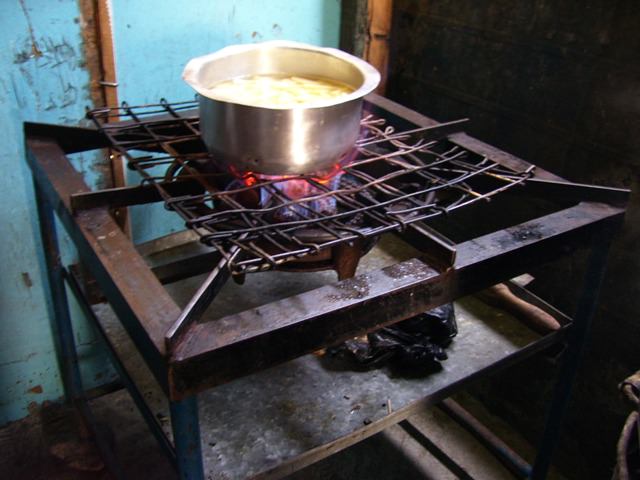By: Sarah Ooko
Send to a friend
The details you provide on this page will not be used to send unsolicited email, and will not be sold to a 3rd party. See privacy policy.
[NAIROBI] Biogas technology — a system that converts organic waste from livestock manure into energy for cooking — can shorten time spent on cooking with wood fuel and also reduce health problems caused by the exposure to smoke, according to a study in Kenya.
The researchers say many women living on small-scale dairy farms in Kenya, as in most rural households in developing countries, cook primarily with wood in poorly-ventilated kitchens. Such women and their children could suffer from exposure to wood smoke and its harmful effects on their health.
To determine whether using biogas could be a better alternative in rural Kenya, the researchers studied the levels of exposure to smoke and its poisonous chemicals among two different groups of rural women. They compared a group of women who used mainly biogas — but who could also use wood — with another who used only wood fuel. They also examined the amounts of time each group spent on cooking over seven days.
Women from farms using biogas spent 50 per cent less time cooking with wood fuel compared to the other group even though both groups spent similar amounts of time in their kitchens, according to results of the study published in the Journal of Exposure Science and Environmental Epidemiology on 31 July.
"Women using biogas benefited as they spent significantly less time exposed to harmful emissions from wood smoke," notes John VanLeeuwen, a co-author of the study and an epidemiologist at the University of Prince Edward Island in Canada.
VanLeeuwen says that biogas smoke has a low concentration of toxic emissions than that produced by wood because it burns cleanly, reducing air pollution.
Jeremiah Chakaya, technical advisor of Kenya Association for the Prevention of Tuberculosis and Lung Diseases, explains: "Wood fuel smoke contributes immensely to indoor air pollution and increases the amount of toxic emissions inhaled. The smoke destroys the lung defense mechanism, causing breathing problems and the risk of severe lung infections such as pneumonia and obstructive pulmonary disease".
VanLeeuwen notes that the study's findings are useful to Sub-Saharan Africa because the popularity of dairy farming is growing in the region as milk consumption increases.
"Manure from cows could be used to produce a cost-effective alternative source of cooking energy, thus reducing pressure on existing forests," he says.
According to Mary Njoki, a mother of five in rural Kenya, despite its benefits, the technology is still out of reach for most women in her village due to the high cost of installing biogas digesters.
"I had to take a loan of KSh80,000 (US$900) that I am still repaying, six months later," she says.
She adds: "Biogas is good because it cooks fast but I still use wood fuel when it is cold season to warm the house and cook food, since during this period, the heat produced by biogas is not sufficient."
Link to full study in Journal of Exposure Science and Environmental Epidemiology
This article has been produced by SciDev.Net's Sub-Saharan Africa desk.
References
Journal of Exposure Science and Environmental Epidemiology doi :10.1038/jes.2013.42 (2013)
More on Biofuels
Multimedia
African innovator turns plastic waste into liquid fuel
Francis Kantavooro has produced a locally assembled reactor that turns plastic waste into16/12/19
News
Researchers help draft Senegalese biofuel law
[ABIDJAN] Senegal's government has called on the expertise of the country's researchers in drafting a ...07/03/12
News
Ghana ‘must embrace biogas’
Ghana's policymakers should embrace abundant and clean biogas as a source of energy, to curb its reli ...08/06/11
News
Sub-Saharan Africa news in brief: 3–17 December 2007
Below is a round up of news from or about Sub-Saharan Africa for the period 3–17 December 2007. ...20/12/07
Feature
Biofuel: Africa’s new oil?
Biofuel holds great promise for Africa but the research isn't yet in place to reap the rewards, or ...05/12/07
Opinion
Biofuels: benefits and risks for developing countries
Biofuels offer huge potential, but pose challenges best countered with strong and coherent development poli ...05/12/07








